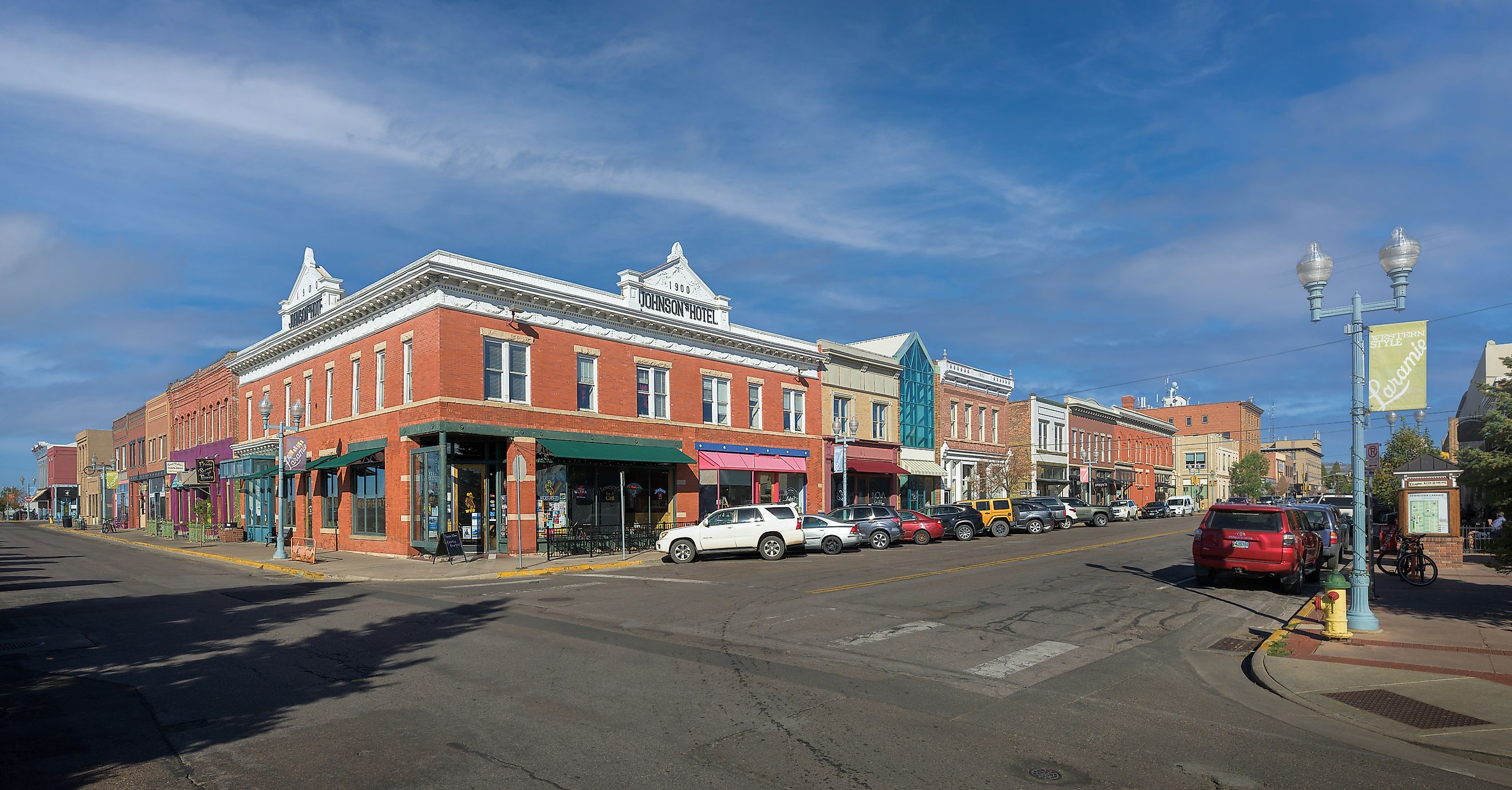
10 Most Historic Small Towns to Visit in Wyoming
Often described as home to more pronghorn antelope than people, Wyoming is also known as the Cowboy State in the Great Plains Region. It is home to Yellowstone and Grand Teton National Park, which feature premiere scenic views and a captivating variety of wildlife. Inhabited by farming towns and mining settlements that sweep across the landscape, its wide open spaces provide refuge to the largest amount of pronghorn in North America, as well as the largest single herd of Wapiti (American Elk) in the world. Wyoming's transformative landscape has been home to many Plains Indian Tribes, including the Eastern Shoshone and Northern Arapaho that populate the Wind River Indian Reservation. Their lifestyles, celebrations, and traditions are woven into the fabric of the state. Many of Wyoming’s small towns are steeped in old Western culture, offering a myriad of experiences across the rolling plains.
Dubois
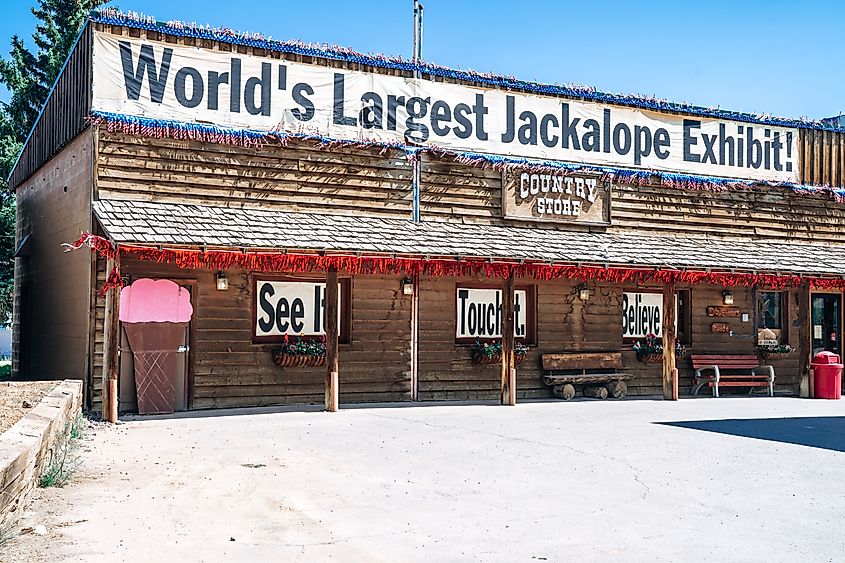
Dubois is tucked into the side of the Wind River Mountains, featuring rustic log buildings that line its Main Street. Considered one of the last real old west towns, Dubois boasts a variety of landscapes, from alpine deserts to arid badlands. Rich in cultural heritage, with deep roots in fur trading, homesteading, ranching, Native American history, and outlaws, including Scandinavian tie hacks. Dubois is home to unique Native American history, as the mountains and valleys surrounding the town were home to a group of Mountain Shoshones known as the Sheepeaters. They included the Wind River region in their yearly migration from the Great Plains into the mountains of Yellowstone, staying high in the mountains in the summer and tucking away into the valleys during the colder winter months.
An hour away from major attractions like Yellowstone and Grand Teton National Park, Dubois offers premier hiking, fishing, wildlife viewing, horse-packing trips, and dogsledding. During the summer months, visitors can experience annual Friday Night Rodeos, a testament to the town's western roots. Dubois is also home to the National Bighorn Sheep Interpretive Center, which is dedicated to educating and inspiring conservation efforts for wild sheep, wildlife, and wildlands. The center offers guided eco-tours showcasing some of the best panoramic views of the Whiskey Basin Wildlife Habitat Area, including Whiskey Mountain and the famous bighorn sheep that reside along the snowcapped peaks, jagged ridges, and forests.
Sheridan
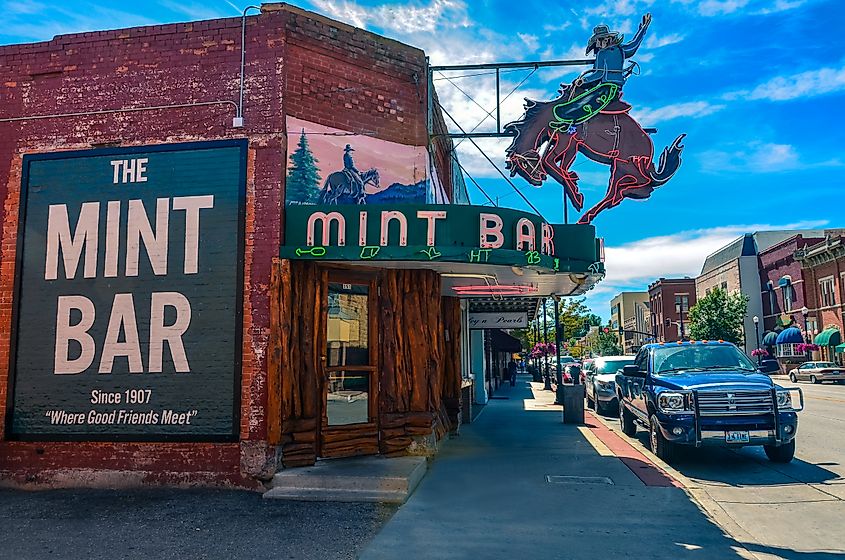
Sheridan is known for its vibrant western history that's embedded in the walls of its historic buildings that line downtown and whisper through the wind that blows along the mountain trails and tree-lined streets. Its rich history can be experienced through cultural attractions, such as the Fort Phil Kearny State Historic Site and the local art galleries, museums, and theaters. Legendary figures like Butch Cassidy, the Sundance Kid, Big Nose George, and Jesse James have all laid claim to land at the base of the Bighorn Mountains.
The most famous of those is Frederick “Buffalo Bill” Cody, who founded the nearby town of Cody and purchased a stake in the Sheridan Inn that became the base of his operations in northern Wyoming. He held casting auditions for his Wild West show on the lawn of the inn but later purchased a ranch just North of Sheridan for his daughter Arta, her husband, and himself. The Sheridan Inn, one of Sheridan’s oldest buildings, still stands today at the heart of the Historic Railroad District and received an award as the “Best Preservation of a Historic Western Building” in 2016. The inn hosts the annual First People’s Powwow and Dance as well as the WYO Rodeo Parade during Rodeo Week each July.
Across from the inn, Sheridan’s original wooded railroad depot, built in 1912 in classic revival style with red brick, was a home to multiple businesses before service was discontinued in 1969. Visitors can experience the Downtown Sheridan Walking Tour, which features 70 historic buildings, including Kendrick Mansion, Fort Mackenzie, and Mint Bar.
Douglas
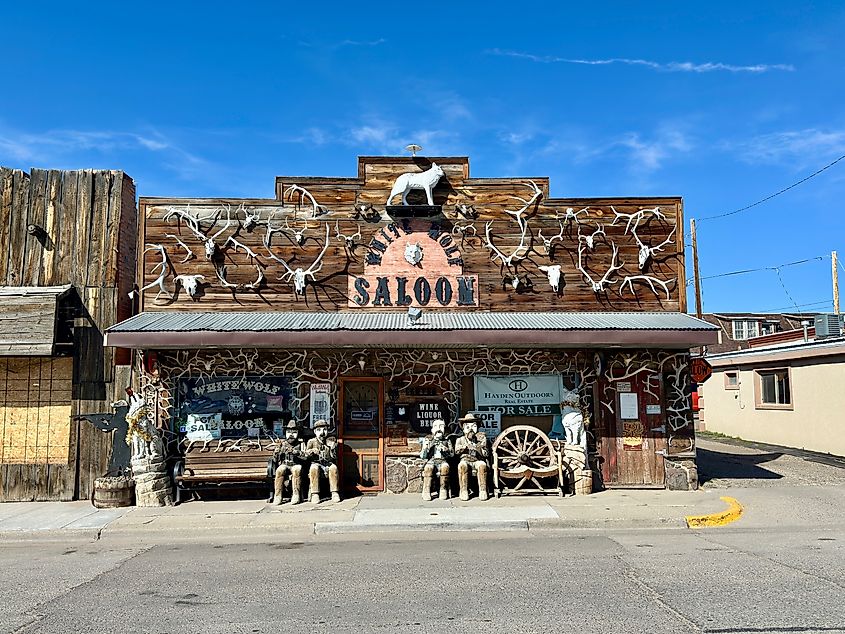
On the banks of the North Platte River, Douglas is known for hosting the Wyoming State Fair that's held every August, as well as Douglas Railroad Days, the first Thursday of June each year. It is famous as the home of the Jackalope, a mythical jackrabbit-antelope hybrid depicted throughout the town. The local Chamber of Commerce issues thousands of Jackalope hunting licenses each year, valid for Jackalope season, one day a year, every June 31st between the hours of midnight and 2 am. Annually in June, Douglas also hosts Jackalope Days, celebrating with a festival that features a car show, vendors, live entertainment, and more. A 12-foot-tall statue of the extraordinary mythical creature stands in Jackalope Square at the heart of downtown, and the World’s Largest Jackalope statue can be found at the Douglas Railroad Interpretive Center. There are even signs on the major motorways warning drivers to “watch out for the Jackalope!”
Another significant location is Camp Douglas Officers’ Club State Historic Site. The one-square-mile area was the primary prisoner-of-war camp for Wyoming during World War II, and is comprised of 180 buildings that housed up to 2,000 Italian and 3,000 German prisoners. The camp was manned by 500 army personal, was larger than the town of Douglas itself during the war, operating from its establishment in spring of 1943 until its deactivation the winter of 1946.
Douglas offers a diverse array of outdoor adventures in the Laramie Mountain Range and Medicine Bow National Forest. A must-see is Ayres Natural Bridge, a 100-foot-long rock archway spanning LaPrele Creek— one of only three natural stone archways in the world with water underneath. Between Douglas and its neighboring town, Glenrock, this 150-acre park includes a picnic area, playground, hiking paths, fishing spots, and more, all set within a breathtaking red rock canyon.
Rock Springs
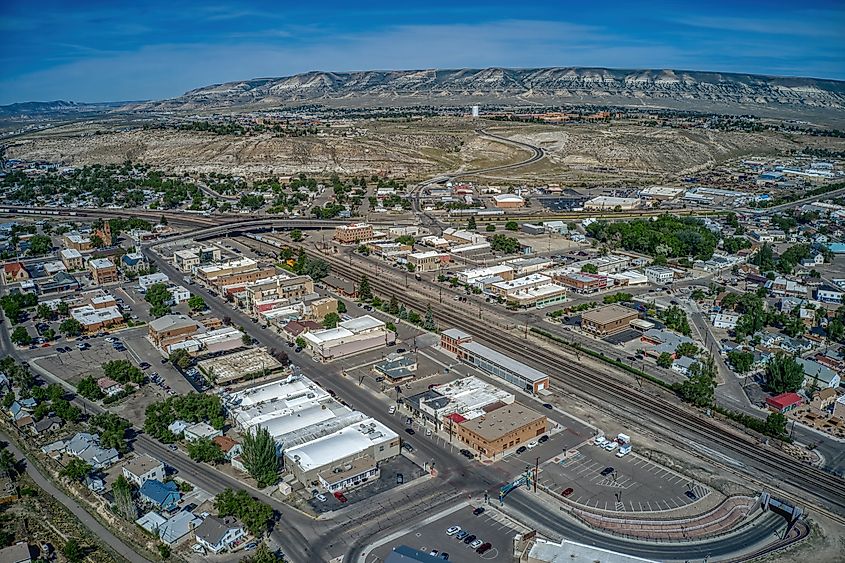
Named after a spring that used to run through town, Rock Springs emerged from the growth of the coal mining industry. The coal mined in Rock Springs powered the steam engines of the Union Pacific Railroad, which laid hundreds of miles of track throughout the surrounding towns. Although the railroad’s conversion to diesel and oil power ended the dominance of the coal mining industry, it left behind a diverse, multicultural community that boasts 56 nationalities. Thousands of immigrants flocked to work in the Union Pacific Coal Mines, and their influence became the foundation of the town's culture, which can be experienced today through the variety of local cuisines available.
Steeped in old western history, Rock Springs is where Robert LeRoy Parker, better known as Butch Cassidy, likely earned his nickname working at the local butcher before he became leader of one of the most notorious gangs of outlaws, the Wild Bunch. Visitors can explore the town's history on a self-guided walking tour of Rock Springs’ downtown, starting at Rocks Springs Historical Museum. The tour features roughly fifty locations, including the Union Pacific Railway Depot and Freight Station. The Rock Spring Historical Museum, housed in the town’s original city hall, showcases exhibits about the town's coal mining history and multicultural heritage. Today, Rock Springs is a thriving hub for shopping, dining, and local tourism, with a booming trona mine industry building its prosperity.
Gillette
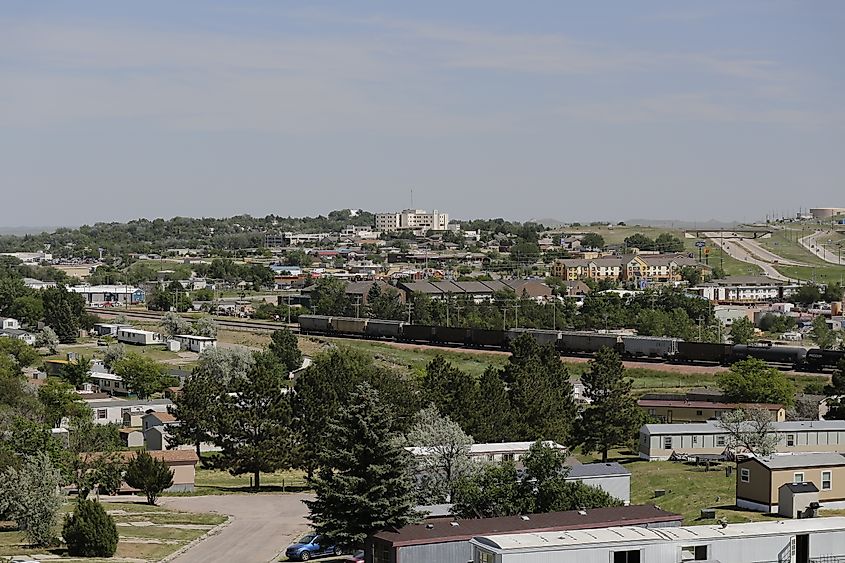
Known as the energy capital of the nation, Gillette is a popular stopover for travelers en route to major historic attractions like Mount Rushmore, Yellowstone, and the Bighorn Mountains. The revitalized downtown encapsulates the essence of Old West lore, woven into the boutiques, museums, restaurants, and shops, and can be explored in two walking tours. Visitors can stand outside Montgomery Bar, where outlaw Ray Montgomery famously overthrew the mayor of the town in 1914, beating him in the street. Or explore city hall where dances, trials, town meetings, and funerals were held in the same space.
Just outside of Gillette, the Durham Bison Ranch spans 55,000 acre family-owned bison ranch and is considered one of the largest bison ranches in North America. The family offers tours of their operation, which feature 3,000 bison raised naturally, holistically and sustainably.
For a glimpse into the region's energy industry, visitors can tour Eagle Butte Coal Mine, where 41 percent of the nation’s coal originates from the Powder River Basin before being distributed across the country. These tours offer a chance to see heavy machinery at work and explore the importance of the energy industry to Wyoming’s economy and how it has evolved in the present day.
Cody
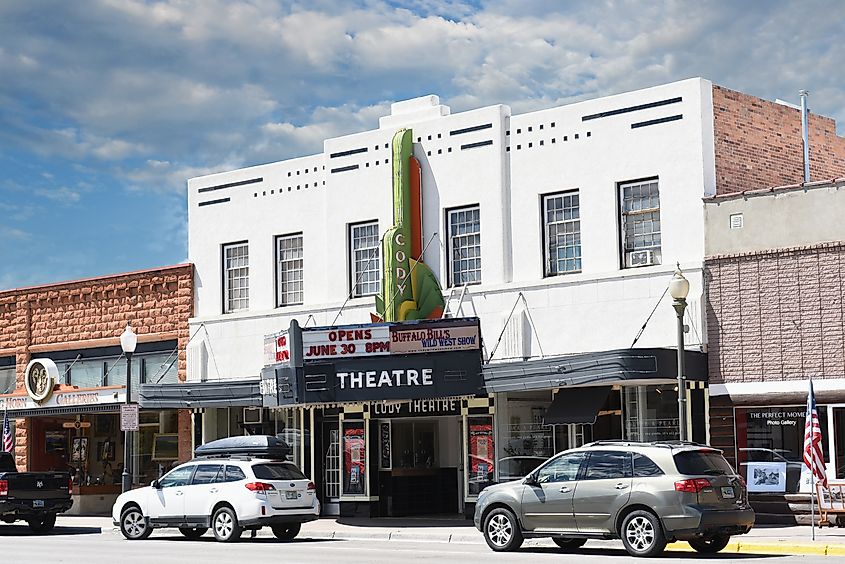
Impressed by the land’s development opportunities, Colonel William Frederick “Buffalo Bill” Cody, the iconic figure of the American Old West, founded Cody in 1896. Known as the Rodeo Capital of the World, the town is just 52 miles from the eastern entrance of Yellowstone National Park. Cody is the only place in the country that has a nightly rodeo performance. It is home to two professional rodeos: the Cody Nite Rodeo, which runs from June 1st to August 1st, and the Cody Stampede, one of the longest-running professional rodeos, hosted annually from July 1st through the 4th.
Visitors can experience shoot-out reenactments like The Wild Bunch or embark on a journey through Old Trail Town, which features a tour of 25 historic buildings just off Yellowstone Highway. Downtown Cody offers a variety of restaurants, boutique shopping, and the Irma Hotel. Also known as Buffalo Bill’s Irma Hotel Restaurant and Saloon, the hotel was established when buffaloes roamed free within the town limits, and Buffalo Bill held auditions for his Wild West Show that toured the U.S. and Europe for three decades. Named after Buffalo Bill's youngest sister, Irma, the hotel was built to boost the town's tourism, attracting visitors from around the world. Buffalo Bill described the hotel as “the sweetest hotel that there ever was” and maintained two suites and an office on the premises.
Buffalo
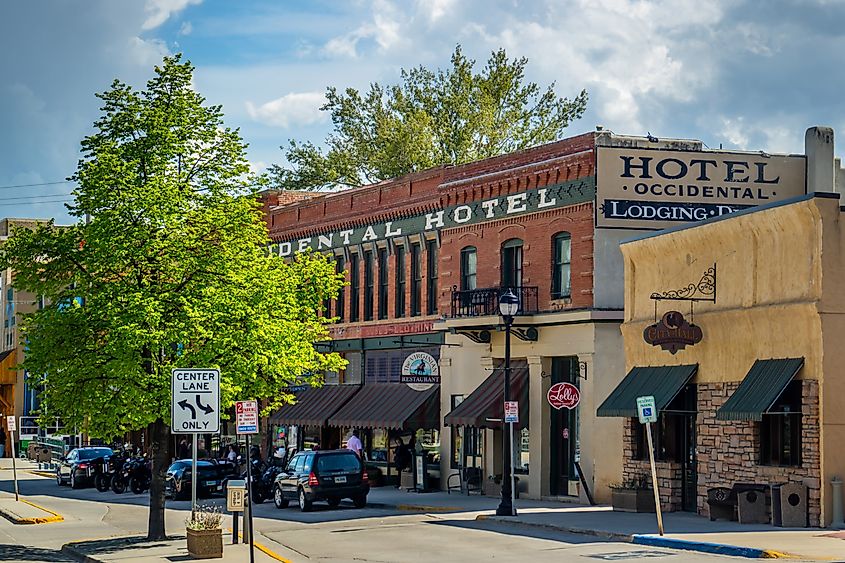
Seated in the foothills of the Big Horn Mountains, Buffalo is a haven for outdoor enthusiasts seeking premier hiking, camping, and fishing. Downtown Buffalo, rich in history, has retained its old western charm, with more than a dozen historic buildings lining Main Street. Among them is the Occidental Hotel, one of the most famous landmark hotels in Buffalo. Fondly referred to as “The Ox,” this award-winning restoration features authentic accommodations, a historic saloon, a fine dining restaurant, and a cafe.
Near the Bozeman Trail at the base of the Bighorn Mountains, The Occidental Hotel has hosted many famous patrons, including Buffalo Bill Cody, former U.S. President Theodore Roosevelt, and Calamity Jane, all of whom once drove freight wagons on the trail. Other notable visitors include outlaws Butch Cassidy and the Sundance Kid, cattle detective Tom Horn, and famous frontier sheriffs Frank Canton and “Red” Angus.
For a unique experience, visitors can explore the Jim Gatchell Memorial Museum, which commemorates Johnson County’s first drugstore and the community pillar that owned it. Jim Gatchell held friendly relationships with a wide range of people who visited his pharmacy, including cowboys, lawmen, outlaws, settlers, and Native Americans. The museum showcases many thoughtful gifts he received throughout his lifetime and utilizes these gifts to tell his remarkable story.
Green River
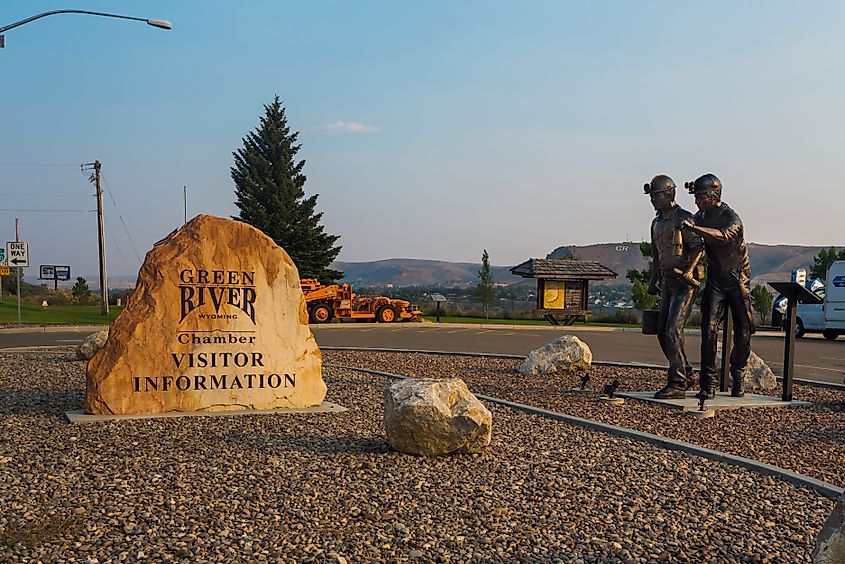
Green River is set on a mesmerizing backdrop of multi-colored buttes and a seemingly endless wide open landscape, Green River is a town shaped by the namesake river that cuts through it with its green-tinted waters. Originally from the Dakota Territory, Green River has a rich history influenced by mountain men, pioneers, ranchers, railroaders, miners, Native Americans, and an array of wildlife.
Known as the Trona Capital of the World, Green River plays a critical role in mining trona, a raw material refined into soda ash, which is used in the production of a variety of products like glass, paper, and laundry detergent. Green River is also home to Expedition Island, a community park and National Historic Site that commemorates the history of the river's explorations through pictures. The park features an exhibit that tells the story of John Wesley Powell, who began his famous exploration expeditions from Expedition Island in the late 1860s. Powell navigated the Green River, Colorado River, and Grand Canyon, and during his second expedition, he was employed by the U.S. Geological Survey with the goal of preserving the western lands. Powell’s journeys led him to explore the last unknown territory that later became the Continental US.
Lusk
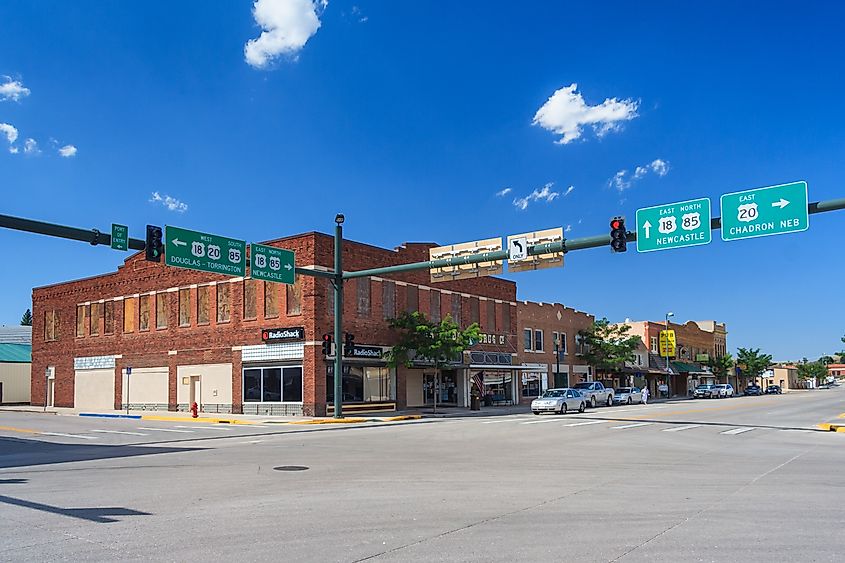
Lusk is set against the hills of the Eastern Plains, surrounded by the Black Hills National Forest. At the center of the Wyoming Quilt Trail, locals came together to beautify the area, adorning businesses, homes, garages, fences, and barns with over 100 painted quilt blocks that weave throughout the community.
During the 1870s and 80’s, Lusk was a prominent destination during the Black Hills Gold Rush, known for its rich deposits of gold, copper, silver, and uranium. Today, the town’s history is preserved in The Stagecoach Museum downtown, which showcases a variety of antiques, including a collection of horse-drawn buggies and carriages. Established in the former Wyoming National Guard Armory, the museum houses a variety of artifacts from Lusk’s homesteading and cattle ranching days during the 19th and 20th centuries. The second floor exhibits an authentic stagecoach used on the Cheyenne to Deadwood Stage and Express Line. Outside, visitors can explore a store and one-room schoolhouse.
Lusk also hosts the annual “Legend of Rawhide” celebration, where the community comes together to perform a live reenactment of a story that happened just south of Lusk. The tale follows Clyde Pickett, who, in an attempt to impress Kate Farley, vows to kill the first Native American he sees. The reenactment is an action-packed adventure equipped with mounted cavalry, a wagon train, and Native Americans, all portrayed by over 200 volunteer actors from surrounding towns. Performed each July, the original script was written by EvaLou “Bonnie” Paris, based on stories that have been verbally passed down for generations.
Laramie
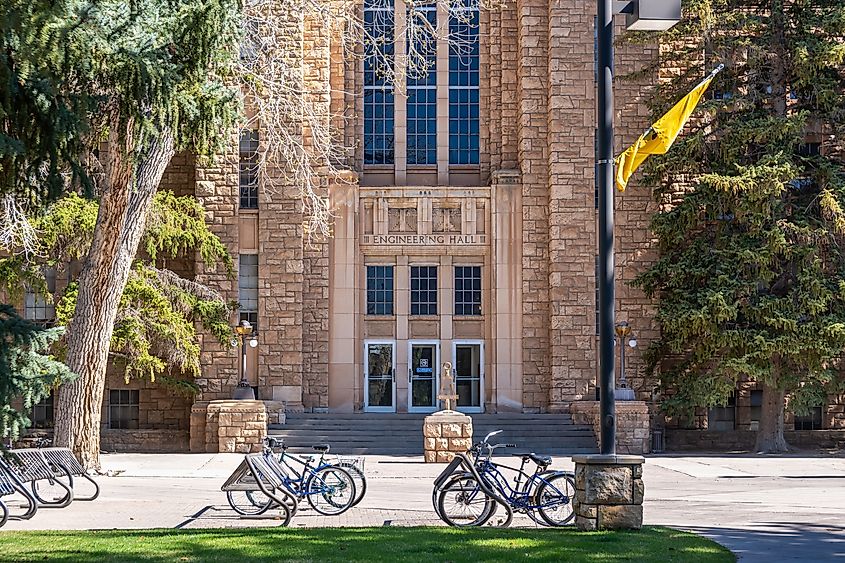
Sitting between two mountain ranges, Laramie is teeming with an intricate history. At an elevation of 7,220 feet, the town was originally established to protect the Overland Trail, a stagecoach line and alternate wagon route that sprung from the Oregon Trail. Trappers migrated to the area to hunt for beaver in the nearby streams from 1817 to 1843. The Fort Laramie Treaty, enacted in 1868, displaced the Northern Arapaho and Cheyenne Tribes, whose lands spanned across Wyoming and its neighboring states, relocating them to the Wind River Reservation in West Central Wyoming, where they joined the Shoshone Tribe. The local tribes sourced ash trees from the nearby mountains for bows and ceremonial dances intended to cure diseases. This use of ash gave the Medicine Bow Mountains and the surrounding national forest their name.
Visitors can experience the Legends of Laramie Tour, an interactive adventure that delves through stories of gun fights, brothels, landmarks and architecture. Downtown Laramie is rich in historical remnants, with its shops, museums and local restaurants. Listed on the National Register of Historic Places, Laramie’s downtown features St. Mathew’s Cathedral, Deanery Hunter Hall, and the First World War Memorial Cross, all in Cathedral Square. Additional attractions include Laramie’s Original Courthouse, the Ivinson Mansion, and many more historical attractions.
Fort Sanders, a frontier military post built in 1866, was made primarily of wood and has since deteriorated due to the elements. However, the remains can still be seen a few miles south of Laramie. The Ames Monument is a 60-foot limestone pyramid, about 20 miles east of Laramie, overlooking the ruins of the old railroad town of Sherman. Today, Laramie is the closest surviving town to the Ames Monument.
Discover Wyoming's Historic Legacy
Wyoming’s vast and varied landscape, rich in both natural beauty and cultural heritage, offers an unparalleled experience of the American West. The Cowboy State is a place where history, tradition, and legacy converge, reflected in how the Plains Indian Tribes and the Old West are deeply embedded into the towns and communities that are scattered across the rolling hills and buttes. It is these idiosyncrasies that make Wyoming a captivating destination for a truly timeless experience.











